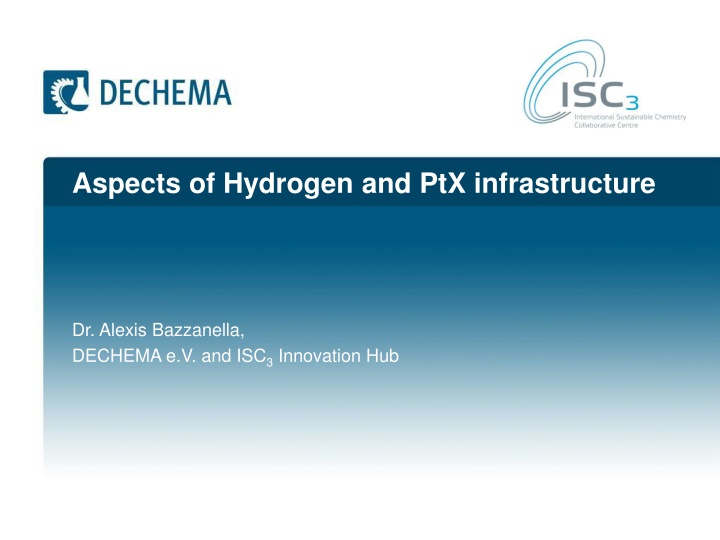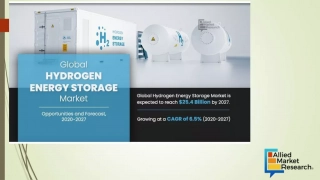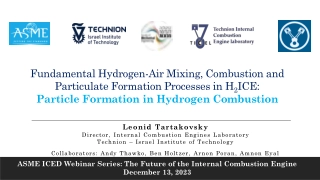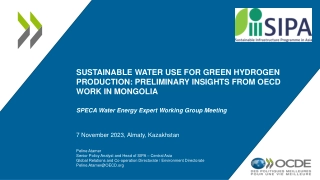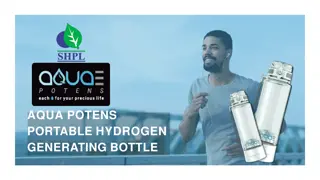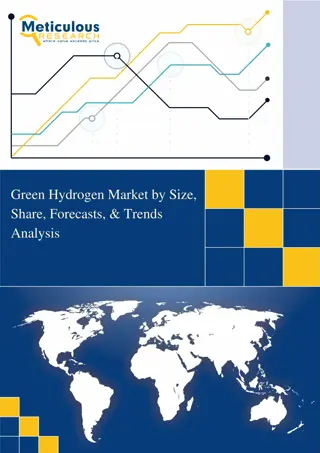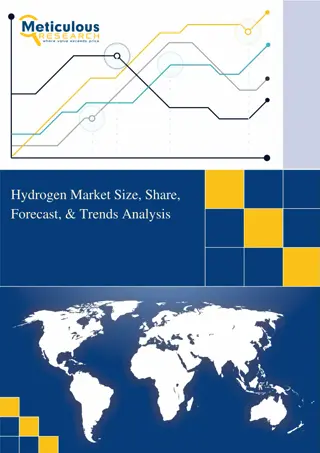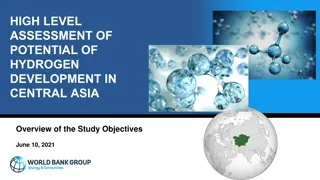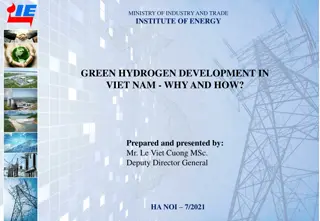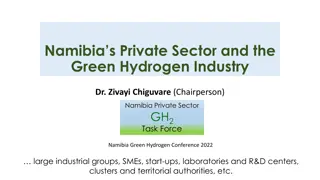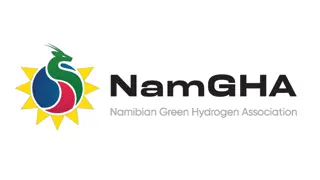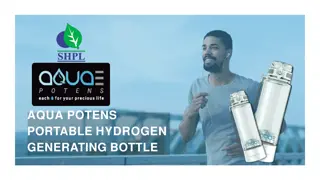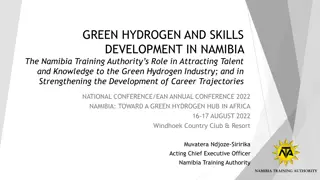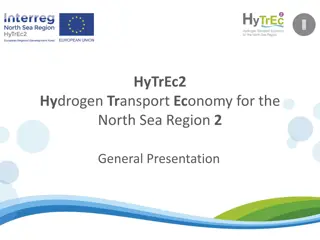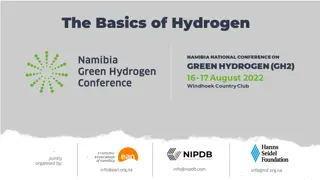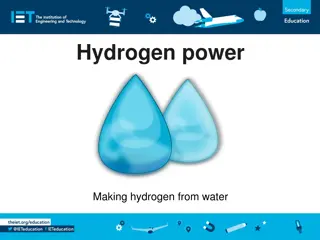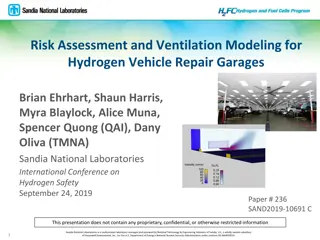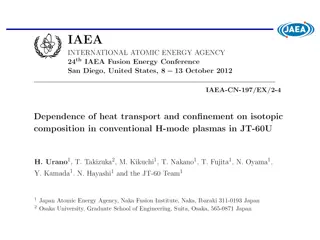Aspects of Hydrogen and PtX Infrastructure for Chemical Industry Transformation
Key aspects of hydrogen and PtX infrastructure in the chemical industry transformation, including energy-related CO2 emissions, green hydrogen utilization, PtX products synthesis, storage, and transport challenges, infrastructure implications, and CO2 sources selection for sustainable development
Download Presentation

Please find below an Image/Link to download the presentation.
The content on the website is provided AS IS for your information and personal use only. It may not be sold, licensed, or shared on other websites without obtaining consent from the author.If you encounter any issues during the download, it is possible that the publisher has removed the file from their server.
You are allowed to download the files provided on this website for personal or commercial use, subject to the condition that they are used lawfully. All files are the property of their respective owners.
The content on the website is provided AS IS for your information and personal use only. It may not be sold, licensed, or shared on other websites without obtaining consent from the author.
E N D
Presentation Transcript
Aspects of Hydrogen and PtX infrastructure Dr. Alexis Bazzanella, DECHEMA e.V. and ISC3Innovation Hub
Transformation of the Chemical Industry Energy related emissions CO2 Fossil Fuels and Feedstock Electricity Products Chemical Process CO2 Process emissions (non-energy related) CO2as by-product
Transformation of the Chemical Industry Energy related emissions CO2 Green Hydrogen and CO2 Electricity Products Chemical Process CO2 Process emissions (non-energy related) CO2as by-product + Renewable electricity as energy supply Alternative carbon sources CO2(CO) Biomass Waste plastics
Green Hydrogen and PtX products Synthesis Storage Transport High-pressure (>350 bar) Cryogenic (<-253 C) LOHC Storage materials PtX products: ammonia, MeOH, FT products Pipelines Road/rail/marine transport of tanks Transport of drop-in syn-fuels/chemicals Alkaline electrolysis PEM electrolysis Solid oxide electrolysis AEM electrolysis Co-electrolysis of water and CO2 Challenges Renew. power demand Investment cost Levelized Cost of H2 Water demand: 9t/tH2 Resource intensity Extremely high pipeline costs Integration into existing production assets Footprint/land use Infrastructure cost PtX: CO2capture Integration into existing production assets Environmental impact of materials
Infrastructure implications: example of different NH3 plant configurations Plant capacity: H2 demand: 500 kt/a NH3 = 57 t/h = 1370 t/d 88 kt/a H2 = 10 t/h 5
Relative infrastructure demand: SMR based NH3 plant (Grey) as reference 6
Infrastructure: Mapping and matchmaking: example Europe
CO2 sources: preferrable options Selection of sources (Almost) pure CO2sources first Ammonia, Ethylene Oxide, Hydrogen (SMR), Ethanol, Biogas fermentation Next: Paper mills, power plants, iron and steel plants Less preferrable: Cement plants Last: Direct Air Capture (DAC) However, also to be considered: Which sources will still be available 2050 and beyond? Which industrial plants have no decarbonization options, e.g. cement? DAC as negative emission option
Process integration Options Isolated single plants Pro Distributed production Option to install smaller plants with less electricity load, flexibility Heat integration, central infrastructure, cost and energy efficiency Con Higher energy demand and plant /utilities invest Integrated plants at chemical park/site Limited available sites Opportunities (examples): Water SOE -> FT reaction; use of FT reaction heat for electrolysis Integrated water management Water supply: e.g. sea water desalination Steam generation Cooling water Wastewater treatment and zero liquid discharge options
Key aspects to consider Availability of renewable electricity Available stationary CO2sources (still existing in 30 years) DAC as option Identification of beneficial locations with chemical production sites Continuous H2production preferrable over intermittent operation Transport of electricity vs. transport of hydrogen and/or CO2 PtX products: NH3, MeOH, FT Naphtha, FT Fuels; which drop-in products match existing production assets? Technology transition: Hybrid operation of production plants Greenfield vs. retrofit brownfield plants Sustainability aspects Reduction of Pt group metals, alternative PEM membranes etc. Concepts for the recycling of electrolyzers
